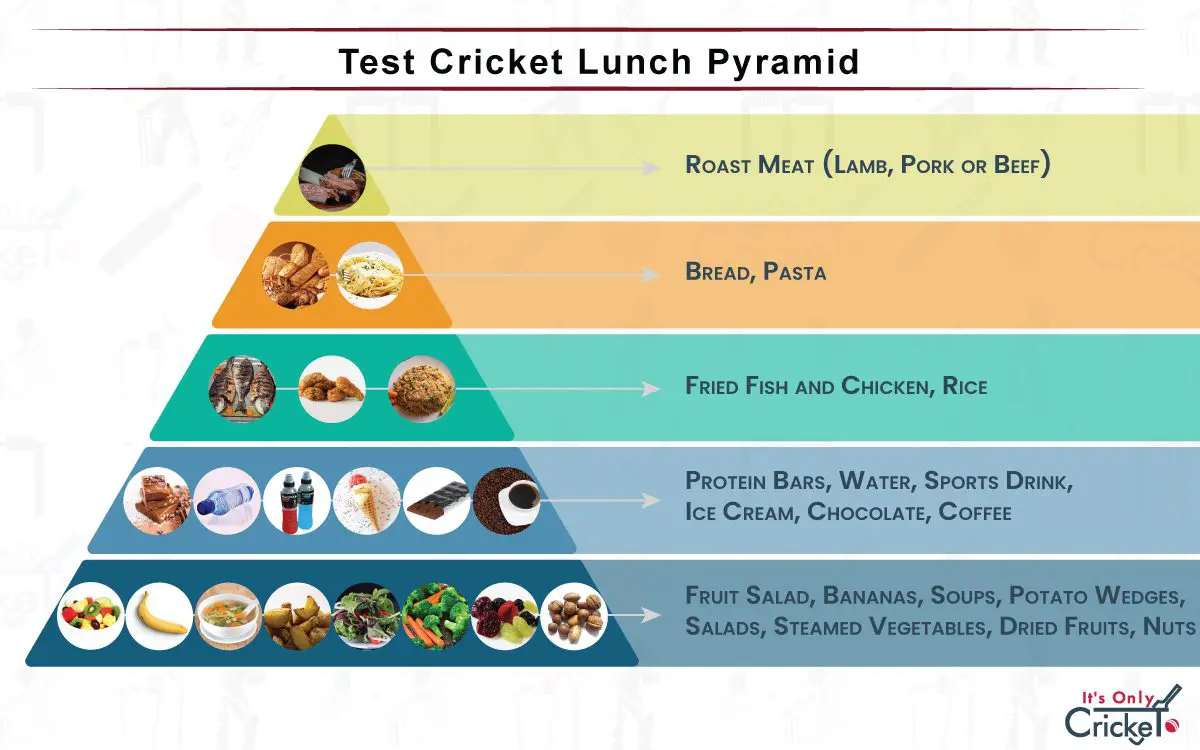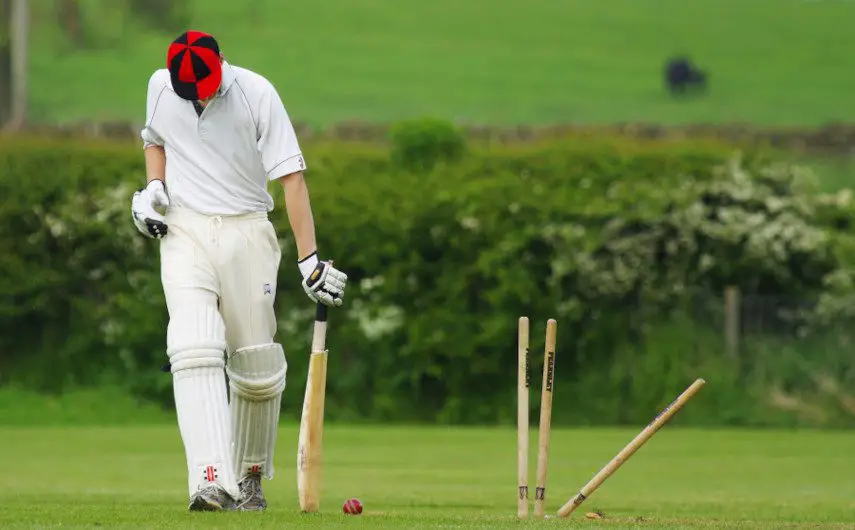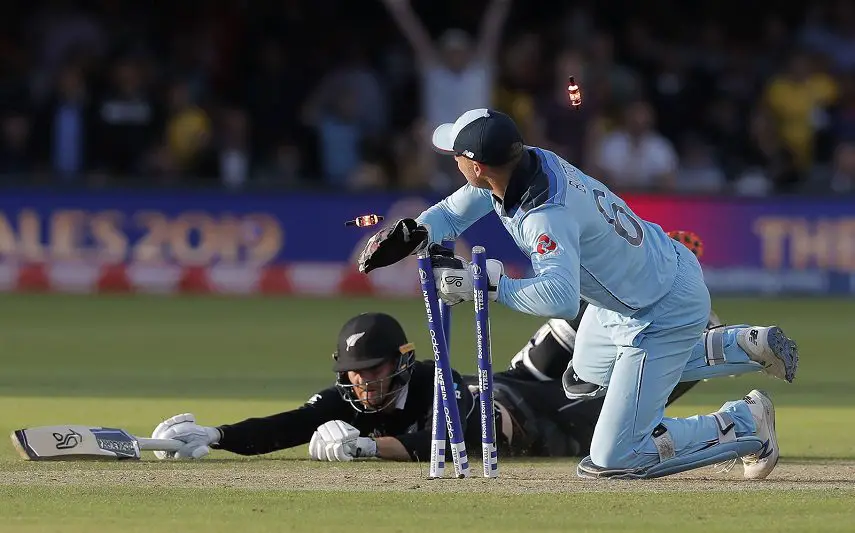Table of Contents
When I enjoy meal breaks during club cricket matches, they generally involve sandwiches and lots of cake but test cricketers need to take more care over their intake.
Lunch Break Time in Test Cricket
A lunch break is essential in order to separate morning and afternoon sessions. Players will be on the field for at least two hours and it wouldn’t be fair to expect them to maintain their intensity of play for much longer.
The break allows them to refresh and recharge in order to be at their best for the rest of the day. The viewing public also wants the players to perform at the best of their abilities and that’s another reason why lunch is important.
As a part of that recharging, the food intake needs to be considered carefully.
How Long is the Lunch Break in Test Cricket?
The lunch break is scheduled for 40 minutes in test match cricket. This is the longest of all the breaks and it is the time when players will pay more attention to their nutritional needs.
It’s also the first scheduled break in the day’s play.

What Time is the Lunch Break in Test Cricket?
The exact time of the lunch break will vary depending on the country in which the game is taking place. However, this should be scheduled for two hours after the start of play. For example, test matches in England begin at 11:00 am and the lunch break would therefore be set for 1:00pm.
There is some flexibility here: If rain is falling then the umpires can call an early lunch. Later in the test when the teams are trying to make up for any lost overs, the lunch interval could also be put back.
What do Cricketers Eat During the Lunch Break?
There may be small differences, depending on the preferences of individuals and what they are expected to do in the next two hour session. For those who were batting at the time that lunch was called, they are most likely to have something small and plain such as a banana or a protein bar.
It’s all about maintaining energy and a heavier meal is likely to slow them down after the interval.
Bowlers may do the same while others are free to take on more food. Fielders, and those who have either batted or are not set to bat for some time, will have a wide choice of main meals.
Chicken and fish are important protein sources and are likely to be lower in fat. For any players with a plant based diet, there will be vegetarian alternatives such as pulses plus cooked vegetables and salads.
There could also be a dessert but this will be light and could possibly involve a fruit salad. Low fat ice cream may also be provided as a treat.
While cricketers’ needs and preferences will be different, the food that is provided during the lunch break will all follow a similar theme. It will typically be low on fat and high in carbohydrates in order to provide energy.

Is There a Lunch Break in ODI Cricket?
A lunch break is not a regular part of One Day Internationals. Instead, the players will take a solitary break between the two scheduled innings. The duration of this interval is set for 45 minutes.
So, the day’s play in an ODI includes a 3.5 hour session for the first innings, followed by that 45 minute break. The second innings also has 3.5 hours allocated to it.
The timing of the 45 over break can be flexible and, for example, if the team batting first is all out within two hours, there could be a brief, ten minute break between innings. The side batting second could then bat for an hour before the 45 minute break commences.

Intervals Law
Law 11 deals with intervals that can or will take place during any form of cricket. Within this section of the rule book, the laws cover all of the meal breaks that I’ve listed in this round up.
Drinks breaks are also considered to be intervals. The timing of these will typically be agreed between the umpires and the two captains but, in general, they will take place after an hour of the start or the resumption of play.
In test and first class cricket, the break between the close of play and the resumption on the following day is also considered to be a designated interval.
Other scheduled intervals can be agreed between the captains and the umpires. From 2020 onwards, we saw some sanitisation breaks implemented due to the outbreak of Covid. Hopefully these will disappear before too long but it’s a good example of supplementary intervals that can be agreed upon before the start of play.


